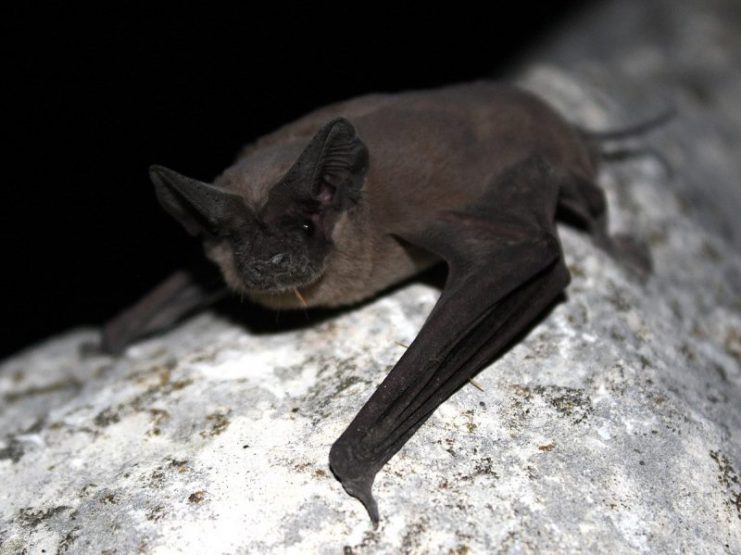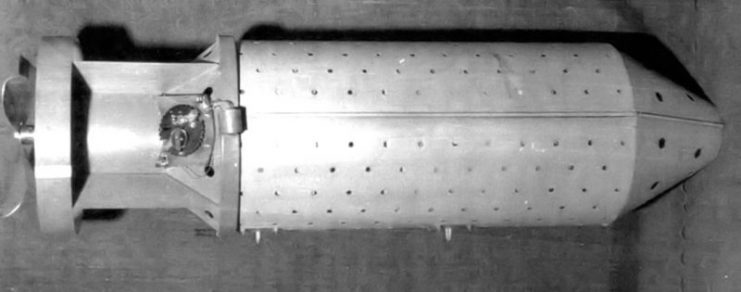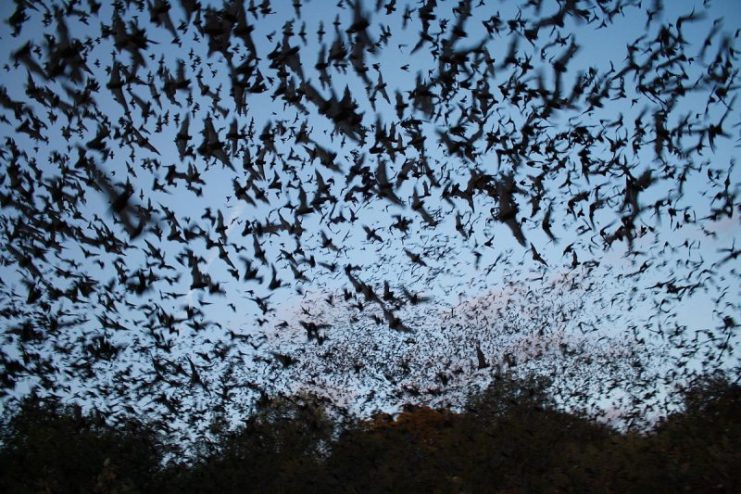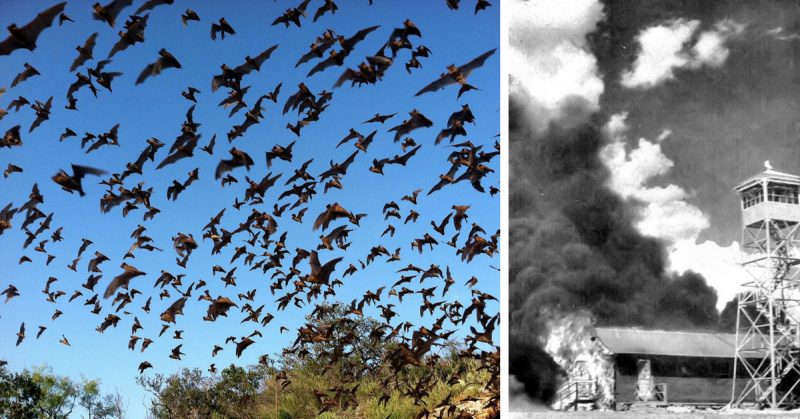Military organizations all over the world are always on the lookout for new ways to wreak havoc on their enemies, and the animal kingdom has not escaped their notice. Aside from the very well documented use of horses, dogs, and carrier pigeons, there are the slightly lesser known projects that involved animals such as dolphins and elephants.
Perhaps the most unusual occurred during WWII when the American military decided to turn Mexican Fruit Bats into a secret weapon of mass destruction of the era.
A wildly imaginative inventor and dentist, Lytle Adams, living in Pennsylvania, was one of the millions of Americans incensed by the Japanese attack on Pearl Harbour in 1941. Determined to help find a way to retaliate against the Japanese he dreamed up the idea of attaching bombs to bats and releasing them over Japan where they would explode, killing the enemy!
What could possibly go wrong?

This was not the first unusual idea that Adams had come up with and, more amazingly, had actually convinced people in high places that they were worth following up. He had convinced the President’s wife, Eleanor Roosevelt, that a plane that delivered mail without landing was a sound idea so when he brought his batty idea to the presidency, it was sent on to the National Research Defense Committee (of Manhattan Project fame), with a letter of recommendation from President Roosevelt.
With presidential support, the committee named it Project X-Ray, gave it top secret status and assigned a leading team of military experts, engineers and biologists to bring it to fruition. Together they set about trying to overcome the hurdles that the project faced; a bomb did not exist that was small enough for an animal the size of a mouse to carry and secondly it was not possible to train bats in the same way that dogs, horses, dolphins, and elephants had been so that they could be instructed to follow orders. Undaunted, the team set about solving these problems with a great deal of enthusiasm.

To begin with, the team had to capture their bomb carriers, so they headed to the south west of the USA to locate caves where millions of Mexican free-tailed bats roosted. Having caught their carriers, the team began creating a bomb tiny enough for the bats to carry. The components for this small bomb were built in a factory owned by Bing Crosby.
Once they had both halves of the equation in place, the time came to try and mate one with the other to create the bat-bomb to take on the Japanese. The plan was to cool the bats using a refrigerator forcing them into a stupor and making them easy to handle.
The tiny explosive parcels would be attached to the bats with twine, and it was hoped that the bats would chew through the cord dropping the little explosive packets which would then explode.

The research team discovered that calculating the time it took for the bats to warm up was very tricky. Initial tests using dummy packages proved this to be true as the bats either did not warm up sufficiently and plummeted to the ground or warmed too quickly escaping from the base before the explosives could be attached.
The indomitable team would not give up so, in June 1943, they decided to start testing using the proper explosive devices. Once again the experiment seemed to go somewhat awry as the report on the experiment reads, “testing was concluded . . . when a fire destroyed a large portion of the test material.”
This was a severe understatement as the fleeing mini-bombers caused a fire that destroyed the control tower, the barracks and several other buildings in Carlsbad, New Mexico, where the project was housed.
In a final act of defiance, a couple of the mini suicide-bombers hid under the general’s car before blowing up, taking the car with them. As the project was top secret, civilian firefighters could not enter the base, so the fire spread from one building to the next destroying most of the buildings.

Unsurprisingly, the project never recovered from this explosive finale, and it was canceled in 1944 after costing the American taxpayer well over a million dollars. The National Research Defense Committee then turned its attention to splitting the atom; an area they found a great deal easier to control than the bats!
This, however, is not the end of the story as far as the military interest in bats is concerned. Today, the US military is looking at bats as a defense against the potential threat of bio-weapons which can have a devastating effect.
Scientists have found that bats have an amazing ability to carry some of the earth’s most horrific viruses but do not get sick themselves. Tests have shown that injecting Egyptian fruit bats with the Marburg virus does not make them sick while a similar injection into a human would be a death sentence.
The super-immune system of the bats has fascinated scientists, and they have been trying to understand how the bats counteracts these deadly viruses. Their latest research has been published in the journal Cell.
The team of scientists thinks that the immune system of the bats reacts in a different way to the viral infection and did not fight and try to kill the viral cells but rather turned down the cell’s metabolism so that the virus was starved.
This will also help to explain why viruses that move from bats to humans are so virulent as our immune system is just overwhelmed by the inflammatory response to the infection.

These insights may well provide a pathway to finding a cure for these deadly viruses. Perhaps medication could be developed that reduced the inflammation and deprived the virus of what it needs, rather than trying to fight the infection and killing it.
The Marburg virus is one of the prime candidates for biological weapons as natural outbreaks of this virus in African countries have shown a 90% mortality rate.
The Centers for Disease Control and Prevention classifies the Marburg virus as a Category A bio-terrorism agent and should it be deployed by a terrorist group, it is hoped that insight into the way that bats deal with the virus may provide a means to counter the terrorist threat. This may just redeem the bat in the eyes of the American military!
